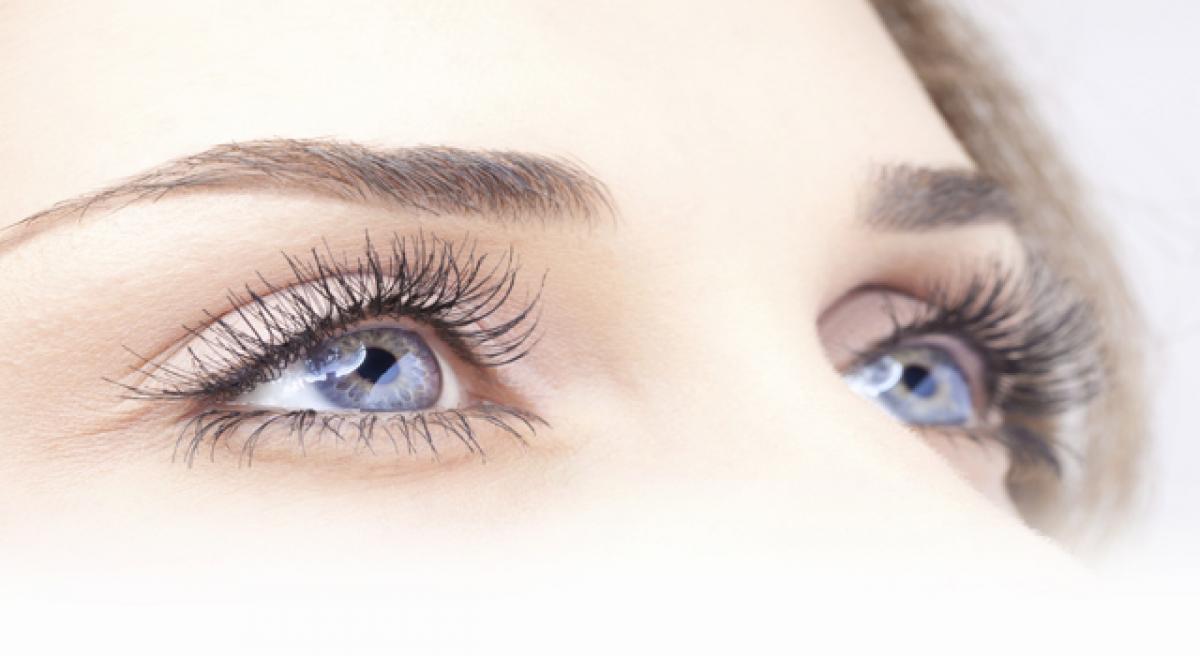Live
- Sudanese army recaptures capital of Sinnar State in central Sudan
- Kishkindha Kaandam Review: Some movies prove not to compromise in having a good cinematic experience and this is one of them
- Son-rise: Hemant Soren grows taller as tribal leader, makes father proud
- ISL 2024-25: 10-man NorthEast United FC hold on to take three points vs Punjab FC
- BGT 2024-25: Jaiswal’s application, commitment to form a partnership was so impressive, says Gilchrist
- BGT 2024-25: Personally, I am very happy with my performance, says Harshit Rana
- Pakistan's Lahore remains world's most polluted city despite light drizzle
- Asha Nautiyal retains Kedarnath for BJP, to be back as MLA after 12 years
- India leads world in science, innovation research: Minister
- Flash flood in Indonesia's South Tapanuli claims two lives
Just In

Shivani Gaur, 31, knows the shelf life of an eye liner pencil is probably a bit shorter than a decade. But, for her and many women, who cling to their makeup, even if it doesn\'t suit their skin type or are allergic to them, it\'s hard to discard or resist eye cosmetics. In fact, most women continue using such products much longer than usually recommended.
Shivani Gaur, 31, knows the shelf life of an eye liner pencil is probably a bit shorter than a decade. But, for her and many women, who cling to their makeup, even if it doesn't suit their skin type or are allergic to them, it's hard to discard or resist eye cosmetics. In fact, most women continue using such products much longer than usually recommended.
That's where it starts getting ugly! The longer use of such cosmetics makes it easier for bacteria or fungi to grow into your makeup, potentially causing eye infections. Eye makeup specifically, mascara, eye liner and creams to be used around eyes usually have a shorter shelf life than other cosmetics.
The most common eye infection reported due to such inferior quality or expired eye-makeup products is Blepharitis. This is a condition of an inflammation of the eyelid that can be caused by an overgrowth of bacteria. Other symptoms associated with Blepharitis are swelling in eyelids with oily particles and bacteria coating the eyelid margin near the base of the eyelashes. It's an annoying condition which causes irritation, itchiness, redness, and burning of eyes. The symptoms are usually worse in the morning, after a night of closed eyes has kept eyelids in contact with the ocular surface.
While it could be a result of allergy caused due to overuse of eye makeup, Blepharitis is often associated with dry eyes, bacterial eye infection or certain types of skin conditions such as acne, etc. Patients often complain of watering, crusting and mattering around the lashes and pain, and vision changes too.
Incidence seems to increase with age, but nowadays younger one's appear to be more bothered by the symptoms than elders. This may be because they spend more time while working on computers or overuse of eye cosmetics which provokes dry eye, or because they are more likely to wear contact lenses.
Tips to control Blepharitis
- Massage the eyelids to clean out oil accumulated in the eyelid glands.
- Use artificial tear solutions or lubricating ointments, if prescribed.
- Use anti-dandruff shampoo on the scalp.
- Limit or stop using eye makeup during treatment, and change your cosmetics if your Blepharitis is caused due to eye makeup.
- Temporarily discontinue wearing contact lenses during treatment.
Types of Blepharitis
An optometrist can determine the type of Blepharitis based on the appearance of the eyelid margins. The different types and symptoms are as follows:
Anterior Blepharitis affects the outside front of eyelids, the point where eyelashes are attached while Posterior Blepharitis is linked to dysfunction of eyelid glands that secrete oils for lubrication of eye. This creates a favourable environment for bacterial growth. Also, conditions like acne and scalp dandruff may promote its growth.
It's common to get affected by both anterior and posterior forms of Blepharitis at the same time, but it could be in different degrees of severity.
Treatment of Blepharitis
Eyelid hygiene is the mainstay of treatment for both types of Blepharitis and is something that should be maintained even when symptoms are in remission. Self-care is the most important element of treatment, augmented by help from a doctor or eye care specialist.
Blepharitis treatment helps in relieving symptoms which will recur if self-care is not maintained. In addition to home treatment, people with the eyelid inflammation should avoid using cosmetics such as eyeliner, mascara and other make-up around the eyes.
Management of both anterior and posterior forms of Blepharitis involves a two-part process of lid hygiene, with a third element added for posterior Blepharitis management:
Warm compresses: This helps to loosen and soften crusts. Warm compress means placing a warm cloth over closed eyelids, reheating the compress with warm water when it cools and reapplying for up to 10 minutes.
Lid cleansing: This helps in removing crusts. After compressing, cleanse your eyelid with a clean cotton cloth. This is done by gently rubbing the margin of the eyelid. This lid hygiene needs to be maintained as a self-care regime twice a day every day.
Massage: In case of posterior Blepharitis, massage helps to express the small oil glands of the eyelids. To do this effectively, use a finger or a cotton-tipped applicator/swab to massage the margin of the eyelid (where the eyelashes and glands are) using small circular motions.
Replacement tear drops or "artificial tears" available without a prescription will help to counter the dryness of the eyes caused by Blepharitis during the day. In cases involving bacterial infection, an antibiotic may be prescribed.
By: Dr Ashish Bansal
(The writer is Medical Director at Centre for Sight, Hyderabad.)

© 2024 Hyderabad Media House Limited/The Hans India. All rights reserved. Powered by hocalwire.com







